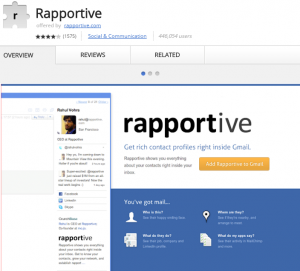According to Search Engine Watch, websites that are listed on the first page of Google search results receive approximately 92% of total search traffic. To increase your search ranking and gain more organic traffic, launch a SEO campaign by taking the following three steps:
1. Perform a SEO Audit
An SEO audit is a comprehensive website audit which helps you evaluate the performance of your current on-page and off-page SEO activities. For example, you use conduct a SEO audit to discover that you haven’t included meta tags on your website or Alt Txt for your images.
Here are eight major components of an SEO audit:
• Backlink Competitive Analysis: This analysis is used to determine the relevancy and quality of your backlinks. You can also use this analysis to evaluate the quality of your competitors’ backlinks. This comparative analysis will help you determine how competitive you against your competitors in terms the number of quality backlinks you have.
• Poisonous Link Analysis: This analysis is used to discover whether your website has poisonous inbound links – links from bad neighborhoods such as link farms and spammy directories. To determine whether you have poisonous links, access Google Webmaster Tool, click on Search Traffic, and then click on Links to Your Site. This feature will let you see all links to can site so you can go through them manually and determine whether you have attracted poisonous links.
• Content Keywords Analysis: This analysis is used to determine how Google interprets your website based on the content on your website. To perform a Content Keywords Analysis, access your Google Webmaster Tool account, click on Google Index, and then click on Content Keywords.
• Site Speed Analysis: This analysis is used to determine whether the speed of your website is optimal (Google uses site speed as a way to evaluate a website’s user-experience). To do so, enter your website URL in Google PageSpeed Insights and Google will assess your site speed and make recommendations on how you can improve it.
• Social Sharing Button Analysis: This analysis is used to determine whether you’ve included social media sharing icons on your website.
According to JeffBullas.com, websites with social sharing buttons can increase their social sharing by up to 700%!
• Duplicate Content Analysis: This analysis is used to determine whether there’s more than one version of a webpage indexed by Google. To conduct such analysis, access your Google Webmaster Tool, click on Search Appearances, and then click on HTML Improvements.
• Javascript Test Analysis: This analysis is used to determine whether major keywords on your website still appear when Javascript is disabled.
According to Google’s Webmaster Central Blog, “some JavaScript removes content from the page rather than adding, which prevents us from indexing the content.” This suggests that if you have web content written in Javascript, there’s a chance that Google won’t be able to index it. Therefore, some online marketing professionals recommend that content writers should write their content or major keywords in HTML so Google can for sure crawl them.
• Content Audit Analysis: This analysis is used to determine whether you’ve included unique and relevant meta descriptions, meta keywords, SEO-friendly URLs, title tags, and other attributes on your website. These attributes help Google determine the relevancy of your website for certain keywords so you can rank for those targeted search queries.
2. Focus Your SEO Activities
Once you’ve performed a SEO audit and identified areas you aren’t performing well in, you now know which SEO activities you should focus on – whether it’s earning more quality inbound links, disavowing poisonous links, or including social media sharing icons.
3. Track Search Ranking
After you’ve engaged in SEO programs, track your performance. The best way to measure your SEO performance is by monitoring the changes in your search ranking.
There are multiple free and paid tools you can use to monitor your search ranking. Examples include:
Google Analytics: To use Google Analytics to assess your search ranking, click on Acquisition, click on Search Engine Optimization, and then click on Queries. This feature will let you see the improvement in your webpages’ search rankings and the keywords your pages are ranking for.
Google Webmaster Tool: This is a Google-powered website management tool which shows you insights about your page such as the number of inbound links you have or any duplicate content issues.
You can also use Google Webmaster Tool to determine the search ranking of your website by clicking on Search Traffic and then Search Queries. This feature shows the impressions, clicks, click-through rates, and average positions of your webpages.
Moz Rank Tracker: This is a Moz-powered SEO tool which sends you routine reports on your webpages’ search rankings for targeted keywords.
By following the three steps above, you launch a successful SEO campaign by first assessing your current SEO performance, identify areas you need to focus on, and tracking the improvement in your search ranking!
Digital & Social Articles on Business 2 Community
(524)
Report Post



